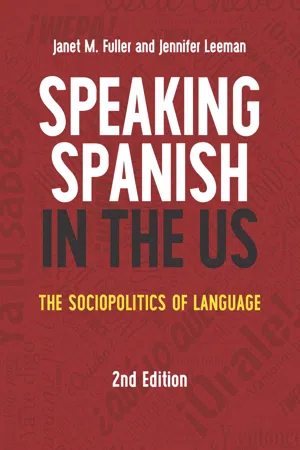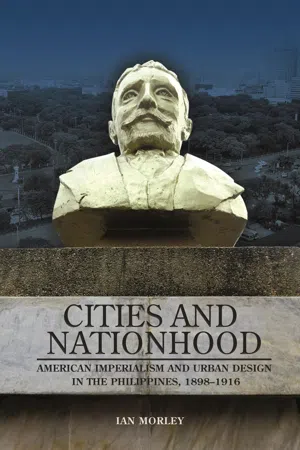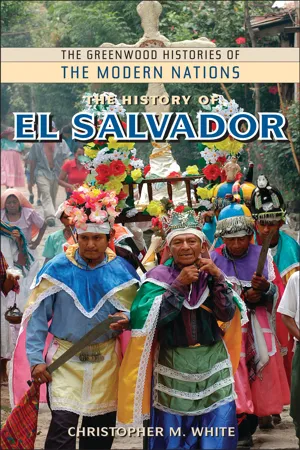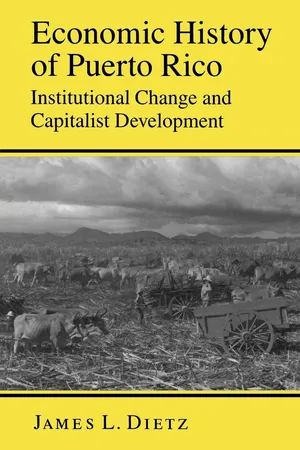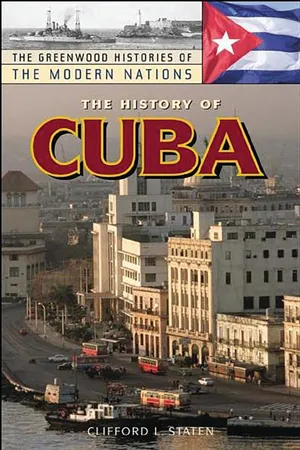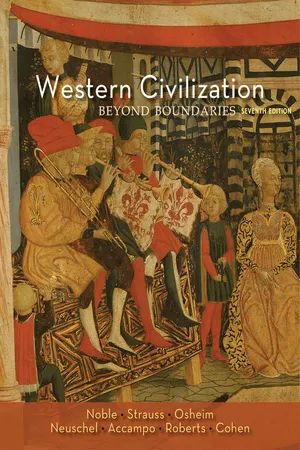History
Spanish Colonization
Spanish colonization refers to the period when Spain established and expanded its territories in the Americas, Asia, and the Pacific. This colonization involved the conquest and settlement of indigenous lands, the imposition of Spanish culture and religion, and the exploitation of natural resources. It had a profound and lasting impact on the demographics, culture, and political systems of the colonized regions.
Written by Perlego with AI-assistance
Related key terms
1 of 5
10 Key excerpts on "Spanish Colonization"
- eBook - PDF
General History of the Caribbean UNESCO Vol 2
New Societies: The Caribbean in the Long Sixteenth Century
- NA NA(Author)
- 2019(Publication Date)
- Palgrave Macmillan(Publisher)
4 SPANISH EXPANSION IN AMERICA, 1492 TO C. 1580 Horst Pietschmann Introduction The historical assessment of the Spanish - and to a lesser extent Portuguese - colonization of America has undergone a radical change in the present century. Until the Second World War, or thereabouts, it was regarded, in a self-assured Europe and in the countries of the American continent which were themselves heavily oriented towards Europe, as a largely positive process conducted by farsighted and bold seafarers and conquistadores. The fact that brutalities had been committed against the indigenous population was conceded with varying degrees of ambiguity; but it was still felt that the process had ultimately brought about Europeanization of the continent. Only the comparatively small group of ethnologists who specialized in America called persistent attention to the destruction of flourishing native cultures and lamented the resulting loss to the cultural heritage of mankind. Under the influence of the decolonization movement of the post-war years, worldwide emphasis on human rights and the reflection now being fostered by many countries of Latin America on their pre-Hispanic Indian past in the wake of a new nationalism, together with the waning fascination of the European model, a rapid reappraisal of the process of Iberian expansion in America set in. The emphasis was now placed on the cruelties perpetrated by the con- querors, the incredible suffering of the ancient inhabitants of the continent with the loss of population numbers and of their cultural identity, followed by repression and exploitation by the new colonial masters. This trend was favoured by a move in historical science away from the great historical prob- lems and the acts of prominent figures to research into structural relation- ships and developments. - eBook - ePub
Speaking Spanish in the US
The Sociopolitics of Language
- Janet M. Fuller, Jennifer Leeman(Authors)
- 2020(Publication Date)
- Multilingual Matters(Publisher)
US intervention in Latin America did not end with the annexation of the lands that now comprise the Southwestern US and Puerto Rico. Instead, the US continued to exert economic, political and military power in the Caribbean as well as Central and South America. Whereas 19th and early 20th century intervention was focused on allowing US businesses to maximize profit, primarily by supporting repressive governments that kept workers in line, in the second half of the 20th century Cold War concerns (i.e. stopping communist movements) also played a crucial role. US policies and involvement have contributed to economic and political instability, as well as social unrest, which in turn have led to increased migration to the US. The need for workers in the US has also attracted immigrants, sometimes as the result of active recruiting efforts by businesses. Thus, despite the long history of Spanish in the US, immigration has been a key factor in its continued presence and strength, given the pattern of language shift that results in the third generation being likely to be predominantly or exclusively English-speaking. For this reason, in the second half of chapter we look at the history of Latin American migration to the US, and we briefly consider current immigration policy.Spanish Colonization in North America and the CaribbeanWith the arrival of Christopher Columbus in the Bahamas in 1492, the Spanish began a centuries-long period of exploration, conquest and colonization in the Caribbean and throughout the Americas. Columbus and his men claimed the islands of Cuba and Hispaniola (shared by the present-day countries of Haiti and the Dominican Republic). After returning to Spain and impressing the Spanish monarchs Isabelle and Ferdinand with tales of gold and riches, Columbus again sailed to the Caribbean, bringing more ships, men, and livestock, as well as plans to create a Spanish empire in the Americas.In the Caribbean the Spanish colonists enslaved the Indigenous Taíno population, forcing them to work on sugar plantations and ranches as well as in the mines. As a result of the brutal treatment and exploitation they suffered at the hand of the conquerors, together with the devastating effects of exposure to European diseases, hundreds of thousands of Taínos died. According to Taylor (2002), the number of Taínos on Hispaniola dropped from at least 300,000 in 1492 to just 500 in 1548, a 98% reduction in just over 50 years. Others put the original number higher and the speed of the devastation even faster (Gonzalez, 2011). With the decline of the Taínos, their Arawak language was lost. A few Arawak borrowings into Spanish (and English via Spanish) have endured, including huracán , tabaco and guayaba (‘hurricane, tobacco, guava’). And many Puerto Ricans of all ethnoracial backgrounds refer to the island as Boríquen or Borínquen , and to themselves as Boricuas - eBook - PDF
Cities and Nationhood
American Imperialism and Urban Design in the Philippines, 1898–1916
- Ian Morley(Author)
- 2018(Publication Date)
- University of Hawaii Press(Publisher)
64 Spanish Colonialism, American Imperialism, and the Philippines 33 Spain’s occupation of the Philippines had an immense impact on the character of Philippine civilization. Bringing together for the first time the islands of the Philippine Archipelago into a single geographical and political unit, and utilizing their experiences in the Americas (from the late 1400s), the Spanish developed colonial settlements to prompt cultural transformation, control and exploit the local population, and expedite the generic aims of colonization: the message of God, the pro-motion of Spain’s glory, and the acquisition of natural resources such as gold. Similar to that in Neuva España (New Spain—an area known today as Central America) and Neuva Granada (New Granada—the ter-ritory presently comprising Colombia, Ecuador, Panama, Peru, and Ven-ezuela), urban development and the composition of new settlements in the Philippines was greatly affected by King Philip II’s 1573 Law of the Indies. As a text that left a formidable imprint in all the areas of Spanish influence, a decree that was a direct response to Spanish governmental concern for the founding of colonial towns, the Law of the Indies ensured the creation of a uniform urban form throughout the entire geo-graphical reach of the Spanish Empire. 65 The impact of the ruling, with its 148 ordinances, was enormous—“probably the most effective plan-ning document in the history of mankind” 66 —and acted as Spain’s urban development manual until the collapse of its empire in 1898. Revealing the importance of urban places to Spanish Colonization and in effect equating urbanism with civilization 67 —the Spaniards placed strong emphasis on the city given its importance for colonial adminis-tration, reproduction of capital, ecclesiastical management, and cultural activities—the Law of the Indies accentuated a need to construct urban environments with features recognizable to the European colonizers. - eBook - PDF
- Christopher M. White(Author)
- 2008(Publication Date)
- Greenwood(Publisher)
3 The Colonial Period, 1524–1821 THE AFTERMATH OF CONQUEST With the long age of conquest, El Salvador found itself quickly and forever altered from the very heart of its preconquest foundations. Foreign invaders controlled the territory by force; diseases reduced the Indians to a shadow of their former selves; adelantados (first arrivals) governed over Spanish and Indian alike; Indians were forced to work for encomenderos (Spanish landlords charged with converting the Indians); the new mixed race mestizo (or ladino, term used for people of mixed European and Indian blood) increased in num- bers; Salvadorans were part of a global market; the corrupt repartimiento (no real English translation but referred to system of Indian servitude for the Span- ish) system controlled the means of production, African slaves worked for Spanish masters; nonnative animals devastated the landscape; new foods and beverages such as wheat, sugar, olives, coffee, rice, and wine were introduced, and the Catholic Church hierarchy replaced the native religious orders. Surely, these events occurred in the rest of Latin America as well; but it could be argued that colonialism had a more intense and longer lasting impact on El Salvador than on most of the hemisphere. The colonial period of El Sal- vador’s history technically lasted from 1524 to 1821, when the nation declared 36 The History of El Salvador its independence from Spain along with the rest of Central America. Colonial- ism has continued in many ways. Reasons for this abound. For example, the Indian population that had spent the past several thousand years building their own societies experienced the destruction of their culture at the hands of people who cared little about learning about them. Spanish religious practices, forced relocations, forced labor, and church activism led to the loss of Indian identity, breaking down their resistance to oppression and exploitation, even as they lost in battle and in health. - eBook - PDF
Latin America Between Colony and Nation
Selected Essays
- J. Lynch(Author)
- 2001(Publication Date)
- Palgrave Macmillan(Publisher)
3 The Colonial State in Spanish America The colonial State Spain asserted its presence in America through an array of institutions. Traditional historiography studies these in detail, describing colonial policy and American responses in terms of officials, tribunals and laws. The agencies of empire were tangible achievements and evidence of the high quality of Spanish administration. They were even impressive numerically. Between Crown and subject there were some twenty major institutions, while colonial officials were numbered in their thou- sands. The Recopilacio ´n de leyes de los reynos de las Indias (1681) was compiled from 400 000 royal ce ´dulas, which it managed to reduce to a mere 6400 laws. 1 Thus the institutions were described, classified and interpreted from evidence which lay in profusion in law codes, chron- icles and archives. Perhaps there was a tendency to confuse law with reality, but the standard of research was high and derecho indiano, as it was sometimes called, was the discipline which first established the professional study of Latin American history. This stage of research was brought to an end by new interests and changing fashions in history, and by a growing concentration on social and economic aspects of colonial Spanish America. Institutional history lost prestige, as historians turned to the study of Indians, rural societies, regional markets and various aspects of colonial production and exchange, forgetting perhaps that the creation of institutions was an integral part of social activity and their presence or absence a measure of political and economic priorities. More recently, institutional history has returned to favour, though it is now presented as a study of the colonial State. It may be that the term ‘colonial State’ sounds more impressive than ‘colonial institutions’, and we are simply studying the 45 J. Lynch, Latin America between Colony and Nation © Institute of Latin American Studies 2001 - eBook - PDF
Economic History of Puerto Rico
Institutional Change and Capitalist Development
- James L. Dietz(Author)
- 2018(Publication Date)
- Princeton University Press(Publisher)
The wars with England and France, fought in Europe and on the seas, had direct and almost immediate repercussions in Spain's colonies. With Spain literally fighting for survival as an entity on the continent, Madrid's control over its colonies relaxed, of necessity, during this period. Less direct colonial control provided the latitude the creole elite in the colonies required to begin the transformations that would extend its power and control beyond the economic sphere and into the political superstruc-ture. 3 0 The creole elites in Latin America and, to a lesser extent, the Caribbean had gained a measure of economic power via their control over the productive structures, but political power resided in the colonial ap-paratus dominated by Spaniards, many of whom were appointed, served, 2 8 For an overview of the historical process of the bourgeois revolutions, see Hobsbawm, Age of Revolution. For an engaging historical picture of the progressively weakened Spanish empire in another corner of the Caribbean (Trinidad), see Naipaul, The Loss of El Dorado. An interesting though brief consideration of Spanish backwardness can be found in Fernán-dez Méndez, Desarrollo histórico. 2 9 Even much of Spain's earlier dominance had been illusory. In the sixteenth and sev-enteenth centuries, perhaps two-thirds of the silver destined for Spain had to be turned over to foreigners to pay debts incurred by the importation of manufactured products: Elliott, Imperial Spain, p. 174. 3 0 Creoles (criollos) were persons of Spanish descent born in the colony, i.e., the gener-ations deriving from settlers, the military, and so on. The creole elites were relatively privileged groups, just below Spaniards in the hierarchy, and were involved in key eco-nomic activities as professionals, landowners, and sometimes members of the bureaucracy. Their position depended, to an extent, on their relation with dominant Spain. - eBook - PDF
- Clifford L. Staten(Author)
- 2003(Publication Date)
- Greenwood(Publisher)
Early Cuba: Colonialism, Sugar and Nationalism: Cuba to 1868 It is quite common today to hear people talk about how events in one part of the world have a direct impact on other parts of the world. People and media commentators often speak of global in- terdependence as if it were something new. Yet, during the four centuries of Spanish rule over Cuba (1492-1898) one can easily see how events in the Caribbean, Spain, greater Europe and the United States directly affected the island. One can also see how events in Cuba directly affected the world beyond its borders. It is not insignificant that one of the primary consequences or lega- cies of Spanish colonialism is that the island became part of an interdependent world never fully in control of its own destiny. The indigenous peoples of Cuba were either wiped out through disease and Spanish brutality or absorbed through intermarriage in the late 1400s and 1500s. They would not play a significant role in the development of Cuba. The conquistador es, after discovering the island did not have significant deposits of gold and silver, quickly moved on to the immense wealth and treasures found in 2 12 The History of Cuba the Aztec and Inca empires in what is today Mexico and Peru. Thus, for nearly 300 years the island of Cuba was relegated to serving merely as a stopping over point between Spain and the riches from its colonies in Spanish America (Mexico and Central and South America). Little change would take place until several events in the late 1700s set the stage for the island's transforma- tion. These included an eleven-month occupation of Havana by the English in 1762, the emergence of the United States as a market for Cuba, the Spanish Crown's liberalizing trade reforms of 1778 and 1791, and, perhaps most importantly, a slave rebellion in St. Domingue (Haiti) in 1791 that dramatically affected the world market for sugar. These events set into motion forces that would radically alter the destiny of the island. - eBook - ePub
- Pablo Escalante Gonzalbo, Bernardo García Martínez, Luis Jáuregui, Josefina Zoraida Vázquez(Authors)
- 2013(Publication Date)
- El Colegio de México(Publisher)
[1] This potential was realized with the conquest of Mexico and the subsequent conquest of Peru, which resulted from the Spanish advancing beyond the islands and onto the continent itself.At the same time, the American continent, which did not yet have that name but was defined as the New World, began to play a role in the circuit of exchanges that was gradually beginning to encompass the globe. Such exchanges involved people, animals, plants, metals, manufactured goods, and everything associated with them, from diseases to culture. Naturally, exchange activities were managed first and foremost with a view to serving European interests, and Spanish interests in particular. That explains the evolution of colonial dependence which would characterize the Americas in the centuries to come.In general terms, that was the context in which the events associated with the beginning of the colonial era in Mexico took place. Specifically, those events originated in Cuba, where the Spaniards had already been established for almost 20 years. Wanting to expand, they organized several expeditions. In 1517, a voyage led by Francisco Hernández de Córdoba brought them to the coast of Yucatán. This trip, which was more of an exploratory journey, produced the first contact between the European and Mesoamerican worlds.The first expedition was followed by another, and a third, by then with the goal of conquest clearly in mind. This implied that the Spaniards had to resolve a variety of legal issues among themselves in order to define and regulate the privileges or rights to which the conquistadors aspired. The third expedition, organized by Hernando Cortés (also known as Hernán Cortés), left Cuba in 1519, cut off its ties there, and ended up founding a town—Veracruz—and setting up a cabildo - eBook - PDF
Western Civilization
Beyond Boundaries
- Thomas F. X. Noble, Barry Strauss, Duane Osheim, Kristen Neuschel(Authors)
- 2013(Publication Date)
- Cengage Learning EMEA(Publisher)
Resistance to Spanish rule continued into the 1570s, when the last of the independent Inca strongholds was finally destroyed. Colonial Organization The Spanish crown needed to create a colonial government that could control the actions of its headstrong adventurers and create an orderly economy. Although the Spaniards pro- claimed that they would “give to those strange lands the form of our own [land],” the resulting political and economic organization of the new Spanish possessions was a curious mixture of old and new. The head of the administration was the monarchy. As early as the reigns of Ferdinand and Isabella, Spanish monarchs had tried to curb the excesses of the explorers and conquerors who traveled in their name. As we have seen, Isabella initially opposed the enslavement of Amerindians and any slave trade in the new lands. Further, the monarchs promoted a broad- based debate about the rights of Amerindians and the nature of religious conversion. It was royal policy that native rights, even the right not to become Christian, were to be protected. Mexicans had to accept missionaries, but they did not have to convert. Royal control, however, Copyright 2012 Cengage Learning. All Rights Reserved. May not be copied, scanned, or duplicated, in whole or in part. Due to electronic rights, some third party content may be suppressed from the eBook and/or eChapter(s). Editorial review has deemed that any suppressed content does not materially affect the overall learning experience. Cengage Learning reserves the right to remove additional content at any time if subsequent rights restrictions require it. 378 Chapter 13 European Overseas Expansion to 1600 was limited by the sheer distance between the court and the new provinces. On average, it took the Spanish fleet two years to complete a round-trip voyage. It could easily take two years for a royal response to a question to arrive at its destination. - eBook - PDF
- B. W. Higman(Author)
- 2021(Publication Date)
- Cambridge University Press(Publisher)
Only after the colonization of these islands did Spain move on to the mainland: Florida, Mexico, Panama, Cartagena, and, in the 1530s, Peru. Spanish Colonization radiated through the western Caribbean and through the isthmus, moving north and south and, in consequence, focused initially on the Pacific coast. Only later did the Spanish begin to show interest in the Atlantic shores of the Americas and, as a result, these vast regions had a very different colonial experience. Even after the Spanish had established themselves firmly as conquerors on the mainland, they exhibited no real interest in attempting to invade and colonize the Lesser Antilles. Puerto Rico came to represent an eastern frontier, beyond which the Spanish chose not to venture. No doubt this failure or neglect had something to do with the picture that had been built up of the caribe as savage and cannibal, but the task of annihilating the people of the eastern Caribbean must have seemed no greater challenge than doing so on the mainland. It is likely the resources of these islands were regarded by the Spanish as simply not worth the trouble when compared with the riches that beckoned to the west. The consequence of this neglect was that the eastern islands became refuges for any Amerindians who could find their way there. The survival Early Models of Colonization 85 chances of these populations remained relatively good through the sixteenth century. It was in the complex societies of the Taínos of the Greater Antilles that the immediate impact of European invasion and colonization was felt most heavily. Because island populations are especially vulnerable to introduced hazards – notably epidemic disease – the immediate con- sequences of the encounter were particularly dire. All of this gives immense weight to the character of the first encounters between Columbus and the Taínos on the shores of the Caribbean islands.
Index pages curate the most relevant extracts from our library of academic textbooks. They’ve been created using an in-house natural language model (NLM), each adding context and meaning to key research topics.

